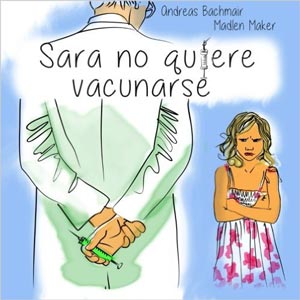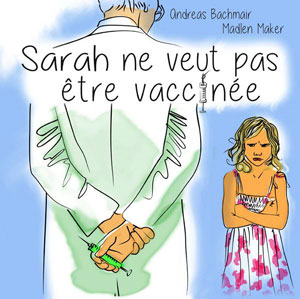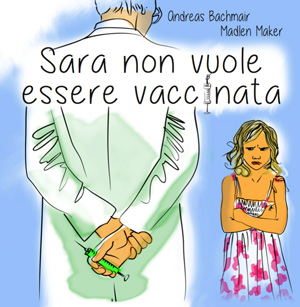Tuberculosis
Pathogens
The bacteria in question are tubercle bacteria which, however, are not pathogenic. This means that only people whose immune systems are weakened, e.g. due to serious diseases or hunger, can be infected. If people are healthy they do not contract tuberculosis. People used to contract the disease from food (milk, cheese, the meat of animals that had tuberculosis). Due to the fact that today’s livestock is free of tuberculosis the disease can only be transferred if the persons involved have had close contact.
The infection is generally passed on via droplets of people the diseased have had close contact with. If there are viruses in the expectoration the tuberculosis is referred to as “open” tuberculosis.
Pathology
After the infection in most cases the pathogens are already staved off in the airways. Only 10% of all people who are infected come down with tuberculosis.
Special phagocytes (alveolar macrophages) in the pulmonary alveoli represent the primary bastion of defense. They can phagocytize the pathogens but are unable to destroy them. Other phagocytes that are attracted are also incapable of doing this. Various materials on the surface of the mycobacteria activate the process of phagocytosis; some are parts of the cell wall or also molecules of the host which have bound to the cell wall of the mycobacteria.
After the pathogens have been absorbed by the alveolar macrophages they are able to prevent the phagosomes, which contain them, to continue to mature. This ensures the survival of the mycobacterium tuberculosis, which is why the immune system forms a wall consisting of several rings of various defense cells around the initial seat of infection. This defense wall of macrophages, the epithelial cells, Langhans giant cells and lymphocytes gather around a center of inflammation with necrosis. This complete entity is referred to as granulotomous tuberculous. Its function is to isolate mycobacterium tuberculosis at the place of penetration and thus prevent it from spreading further.
The mycobacteria in turn react to the encapsulation by changing their activity condition. They are capable of temporarily stopping or converting their metabolism in the granulomas that they metabolize fat which occurs here and thus to require very little oxygen. As a result of a second transition into an active condition (post primary) active tuberculosis can occur as a result of this dormant primary infection. However, as it is possible that this kind can also occur as a result of reinfection it must be assumed that a preceding infection is not sufficient protection against another outbreak of the disease if there is renewed contact. This explains why it is so difficult to develop an effective vaccination against tuberculosis.
Clinical picture
Generally the course of tuberculosis consists of various stages. Clinical symptoms that are manifest immediately following the infection are referred to as primary tuberculosis. Due to the fact that the bacteria “slumber” in the body for life even if the immune system is intact and there are no signs of the disease or after there has been primary tuberculosis and can be reactivated at any point in time, one refers to a primary infection that does not lead to tuberculosis as a latent tuberculosis infection. After a primary infection it is referred to as post primary tuberculosis or secondary tuberculosis. Because the infection primarily hits the lung or other organs, one differentiates between lung tuberculosis and organ tuberculosis.
Primary tuberculosis, closed tuberculosis, early stage
Small infections involving the lymph nodes (primary complex) form in the infected person’s lung three to six weeks after infection from infected droplets. The centers of inflammation are enclosed by blood defense cells. Little knots form (tubercle). If they encapsulated this way the tuberculosis centers do not cause any problems and generally are not connected to the bronchial system. It is referred to as “closed tuberculosis“ which – by definition - is not contagious, as no pathogens are exuded. The mycobacteria, however, can survive in the body for years. If the infected person is not capable of encapsulating the pathogens this way, an active infection with non-characteristic symptoms can occur due to the fact that the pathogens continue to spread. Then there is fatigue and weakness, lack of appetite and weight loss, swollen lymph nodes, slight fever (particularly during afternoons), night sweats and constant coughing without excretion. Even when people are very sick, these symptoms can be indistinct, whereby the danger of contagion is high. Severe courses of the disease include bloody expectoration (haemoptoe), anaemia and weight loss, not infrequent in
Post-primary tuberculosis
At least 10% of people who have caught tuberculosis experience a second outbreak of the disease at a later time. The patients frequently suffer from various symptoms: for weeks they have a constant cough coupled with yellowish-green phlegm (sometimes the phlegm contains blood), weakness, fatigue, sub febrile temperatures in the evenings and night sweats. Coughing is often accompanied by chest pain and patients sometimes suffer from respiratory distress.
The tuberculosis bacteria multiply in the lungs and destroy the tissue. At this stage the expectoration contains bacteria – the patient now suffers from open tuberculosis. When the disease has progressed, other organs may be affected as a result of the dissemination of the bacteria via the blood flow (haematogenous dissemination).
Organ tuberculosis
Aside from affecting the lung, which is the organ that is affected by far the most often (80%) tuberculosis can also manifest itself in a large number of other organs. Organ tuberculosis can originate either as a primary infection at other portals of entry than the lungs or as a result of dispersion via the blood in the course of primary tuberculosis of the lungs. The lymph nodes are what is affected most often. Intestinal tuberculosis has become very rare. It is generally caused by a primary infection by mycobacterium bovis in infected milk. When the kidneys, the adrenal glands or the urogenital tract is involved it is referred to as urogenital tuberculosis and frequently originates in the blood and under participation of the bones and the spinal column. The various manifestations are accompanied by organ-specific symptoms.
Therapy
Mainstream medicine treats tuberculosis with various kinds of antibiotics. This therapy generally lasts several months. If there are resistances the treatment is extended. If there are multiple resistances treatment can last for up to 24 months. (BAG:infectious diseases: Tuberculosis) If it is a case of open TB the patients must be isolated in order not to infect other persons.
Complications
It is very improbable that there will be complication if the disease is recognized in time and treated right. The mortality rate is almost non-existent today. Only very sick people are at risk.
Immunity
TB does not lead to immunity. The pathogens are encapsulated by the body and continue to live there. If the immune system is compromised these capsules can break open and the person can come down with the disease again
More on Tuberkulosis vaccination












